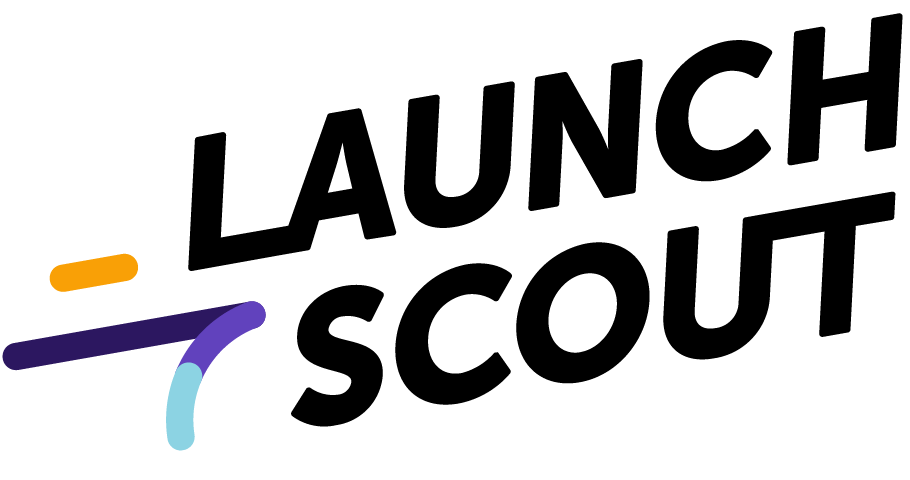ElixirConf 2022 Aug 30 - Sep 2
The Elixir Community's premier conference for Elixir developers and enthusiasts.
ElixirConf 2022 was held at the Gaylord Rockies at the edge of the Front Range in Aurora Colorado!
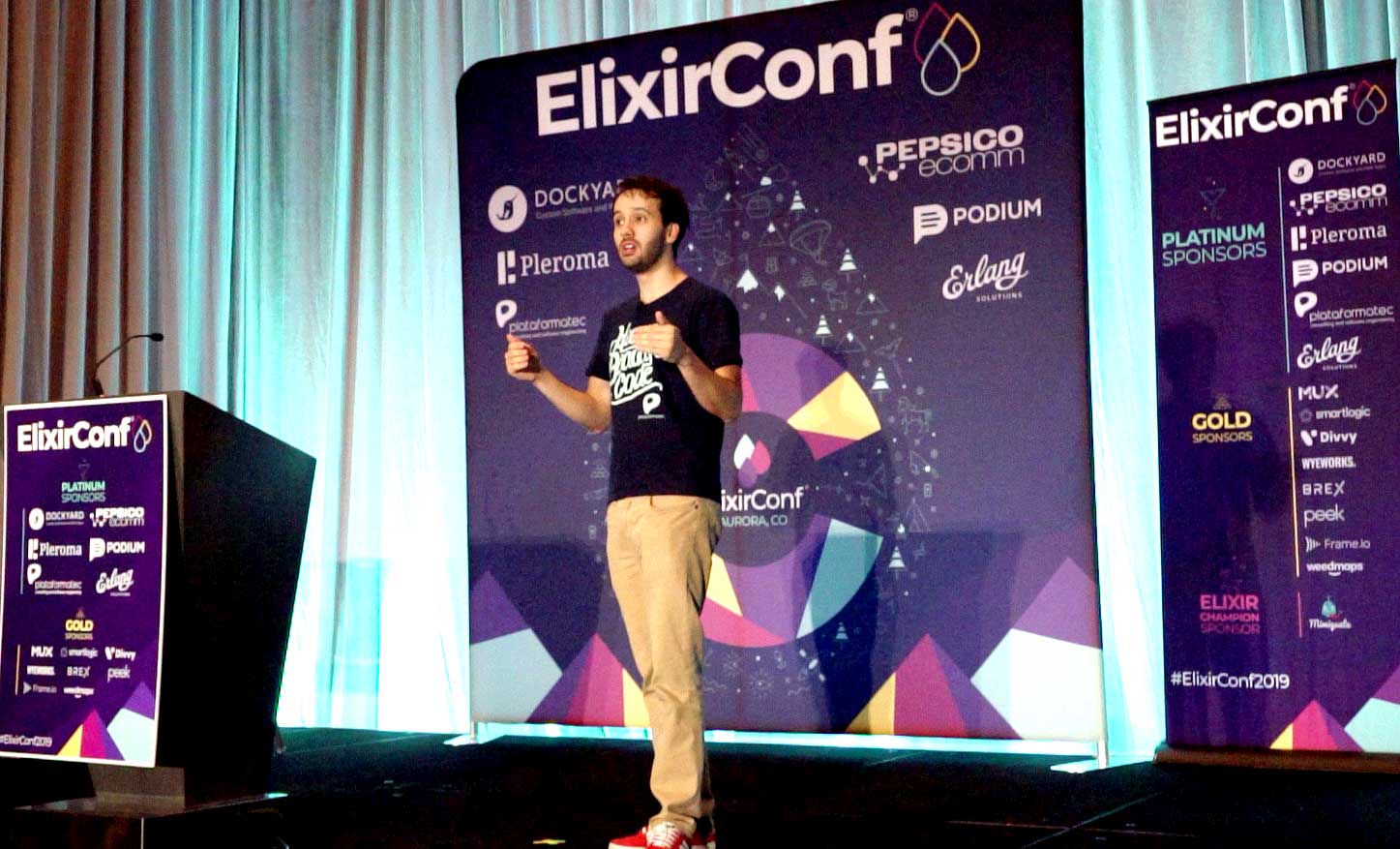
We can't find the internet
Attempting to reconnect
Something went wrong!
Hang in there while we get back on track
The Elixir Community's premier conference for Elixir developers and enthusiasts.
ElixirConf 2022 was held at the Gaylord Rockies at the edge of the Front Range in Aurora Colorado!

ElixirConf US 2022 Keynotes/Emcees/Speakers
ElixirConf US 2022 Speakers

NewAperio
“How to Grow your own Juniors”: A guide to mentoring in an Elixir Environment
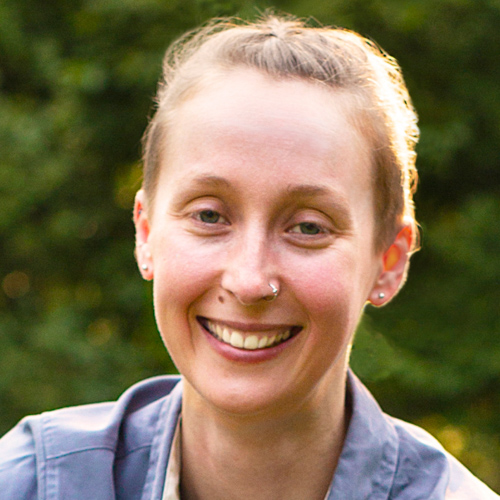
NewAperio
“How to Grow your own Juniors”: A guide to mentoring in an Elixir Environment
Professional training on Nerves, LiveView, Broadway, Telemetry, and Nx at ElixirConf!
Build your own binary clock with Elixir, Livebook, and Nerves. A binary clock is a puzzle for viewers that cryptically represents time using individual LED lights instead of digital numbers. Rather than building an LED circuit yourself, you’ll use a custom printed circuit board custom-built to power the clock. Building the clock in this way gives us a greater opportunity to explore layered design concepts.
Along the way, you’ll explore:
When you’re done, you’ll get to take your hardware home for more experimentation on your own time.

Groxio
Bruce Tate is a kayaker, climber, programmer and father of two from Chattanooga, Tennessee. The award winning author’s dozen titles include Seven Languages in Seven Weeks, Designing Elixir Systems with OTP, Programming Phoenix, and Adopting Elixir. His love for teaching and computer languages led him to found Groxio in 2018, a teaching company that uses innovative techniques to teach developers Elixir. The serial entrepreneur has helped start three companies, and before Groxio, served as CTO for icanmakeitbetter. Bruce stays active in the functional programming community as a speaker, author, editor and conference organizer.

SmartRent
Frank has built embedded Linux-based software for products in many industries including medical, consumer, telecommunications and defense. He is a co-author of the Nerves project and maintains several projects used in embedded Elixir-based devices such as the Elixir Circuits set of libraries, toolshed, fwup, and erlinit.
Broadway gives us powerful tools for dealing with large data sets and creating robust data-processing pipelines. It comes packaged with rate-limiting, back-pressure, and real time visualization dashboards. By the end of this course you’ll be able to create and extend your own pipeline backed by a message broker like RabbitMQ, AWS SQS, or Kafka.
In this course we’ll use message brokers, like Rabbit and Kafka, via Docker to set up data pipelines on your local machine to introduce Broadway’s functionality. We’ll show how it’s easy to leverage these tools within Broadway to create data pipelines capable of processing tens of thousands of messages per second.
We’ll start with a simple producer and consumer, and work through extending it using various producer-consumers. From there we’ll experiment with increasing load at various stages, and how the Erlang VM’s fault tolerance combines with Broadway’s back-pressure to solve load issues. Then, we’ll show how you can instrument your pipeline using telemetry to get valuable insights about how it’s performing. Finally, we’ll introduce the batching capabilities that come baked into Broadway.
By the time you’re finished, you’ll have implemented your own ETL pipeline, understand how to integrate it with an existing ETL pipeline, and see how easy it is to switch message brokers without changing the underlying implementation.
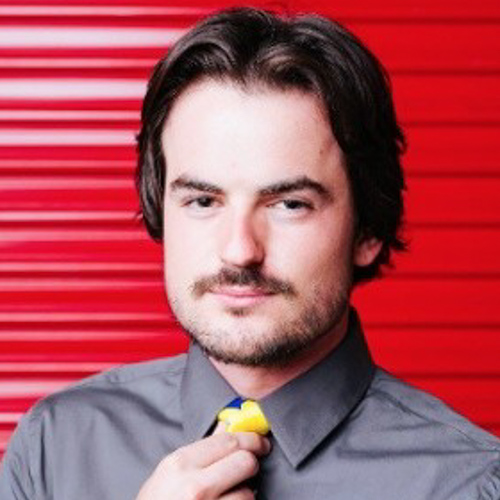
Divvy
Andrew is a Staff Engineer at Divvy currently working on building data pipelines to scale our card product to the next level. He has a love for learning and breaking down complicated topics into simple pieces for others to learn along with him. He enjoys rock climbing, spending time with his two cats, and playing video games.

Savi Solutions
Britton is the CTO at Savi Solutions, building the team and tools to help small footprint brick and mortar owners and operators understand and improve their operations. He’s spent his career in startups, and has been involved in the Elixir community for the past six years.
Come learn about the tools and techniques needed to instrument an Elixir application.
This course will be a hands-on dive into the world of instrumenting Elixir applications. We’ll cover the Telemetry library. How it works, drawbacks, and why it’s pervasive in the community. From there we’ll see how we can use Telemetry to generate metrics and trace data for an application. We’ll look at popular libraries and frameworks and how to use their Telemetry events to further enrich our instrumentation. From there, we’ll explore options for visualizing the data we’ve collected.
By the end of the day, you’ll have a solid understanding of the available tools to add an extensible instrumentation framework to any Elixir application.
Topics that will be covered: Why instrumentation is important. How traces, metrics, and logging fit into the observability stack. What is Telemetry and how to use it? What are the different types of instrumentation we can gather for an application. How to use Telemetry.Metrics to collection data from the BEAM. How to generate traces and spans for Phoenix requests, Broadway consumers, and Oban Workers. How to trace across distributed contexts. Different options for visualizing metrics and spans. Where OpenTelemetry fits into the instrumentation stack.

Cars.com
Zack Kayser is an Elixir enthusiast and software engineer working on cool problems at scale at cars.com. He has worked with Elixir since 2016 and contributed to production systems big and small, as well as contributed as the lead developer on the project that won Dockyard’s Phoenix Phrenzy competition in 2019. Outside of the software engineering world, Zack enjoys traveling, running, and sipping on coffee and/or fine beer.
In this course, we will begin with an overview of machine learning which includes a brief history and introduction to the field. This provides a foundation for then distinguishing the different types of machine learning: supervised, unsupervised, and reinforcement; regression and classification; and prediction and clustering. The overview section is rounded out with a gentle review of statistics and linear algebra.
We’ll then move on to work with data. We will cover data concerns. What is the nature of the training data and what kinds of queries will be made? What do we know about the source of the data or the form of the solution? What is the goal of the prediction or estimation system? How will the answers to individual queries be evaluated? How will the overall performance of the system be measured? These questions will lead us into a discussion of models. How will the model be used to make predictions? What criterion will we use to pick a particular model? What computational process will be used to fit the model to the data and/or to make predictions? What is the best way to describe the data? Normalize it? What are the ways to create both test and training datasets?
Once we cover the data, we are able to move on to solving sample problems using machine learning. To do this, we will work with the Nx Suite: Nx, Axon, and Scidata. Nx gives us multi-dimensional arrays (tensors) and numerical definitions. Scidata provides scientific datasets. Axon requires an overview of neural networks before we tackle its API, inputs, weights, bias/threshold, and output. With these libraries at our disposal, we will create a model and optimize, train, and test data. Lastly, we will repeat those steps using Axon to experience the benefits firsthand.
What will you learn from your data?

Papa
Vanessa is a software engineer, avid reader, mother of three sons, and student of forensic genealogy. She’s been developing s/w since the 90s and is currently a Senior Elixir Manager to a magnificently talented team making the world better at Papa. Vanessa began working in the Erlang Ecosystem in 2011.
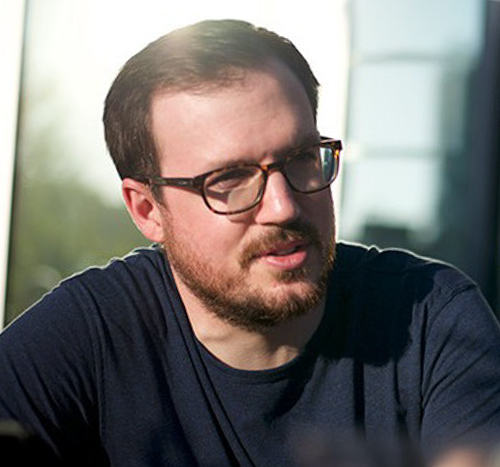
Interfolio
Backend Focused; Full stack enthusiast; AI Researcher. Always building something.
Over the course of building out a LiveView application, you’ll learn how LiveView works under the hood to support interactive UIs, you’ll secure your live views with authentication and authorization, you’ll architect a complex, layered UI with LiveView components, you’ll bring real-time features to your live views with Phoenix PubSub, and you’ll explore some of the latest LiveView features that let you support sophisticated user interactions with custom JavaScript, test your live view with ease, upload files to sophisticated forms, and more. By the end of the day, you’ll be well on your way to LiveView mastery.), description: ~s(LiveView empowers developers and teams to be highly productive by keeping your brain firmly focused on the server-side. Backed by OTP, it brings a fast and fault-tolerant UI to your web apps and enables you to build complex interactive and real-time features easily. In this training, you’ll master the tools you need to be a productive LiveView developer.
Over the course of the day, you’ll build out a real LiveView application and learn how LiveView works under the hood to support interactive UIs, how to build basic forms, how to make your forms more advanced with live uploads, how to secure your LiveViews with live sessions and LifeView lifecycle hooks, how to design layered UIs with components, how to test your LiveViews, how to support advanced client-side interactions with the JS commands API, and how to integrate PubSub into your live views for real-time functionality.
You’ll get hands-on experience by pairing up with your classmates to iteratively build out a set of features into a real LiveView app, interspersed with brief lectures and code samples from your instructors.
LiveView empowers developers and teams to be highly productive by keeping your brain firmly focused on the server-side. Backed by OTP, it brings a fast and fault-tolerant UI to your web apps and enables you to build complex interactive and real-time features easily. In this training, you’ll master the tools you need to be a productive LiveView developer.
Over the course of the day, you’ll build out a real LiveView application and learn how LiveView works under the hood to support interactive UIs, how to build basic forms, how to make your forms more advanced with live uploads, how to secure your LiveViews with live sessions and LifeView lifecycle hooks, how to design layered UIs with components, how to test your LiveViews, how to support advanced client-side interactions with the JS commands API, and how to integrate PubSub into your live views for real-time functionality.
You’ll get hands-on experience by pairing up with your classmates to iteratively build out a set of features into a real LiveView app, interspersed with brief lectures and code samples from your instructors.

GitHub
Sophie is a Senior Engineer at GitHub and the co-author of Programming Phoenix LiveView. She is the co-host of the BeamRad.io podcast. She is committed to promoting Elixir education through weekly mentoring sessions, frequent blog posts, and by giving trainings and workshops. Historically, she is a cat person but will admit to owning a dog.
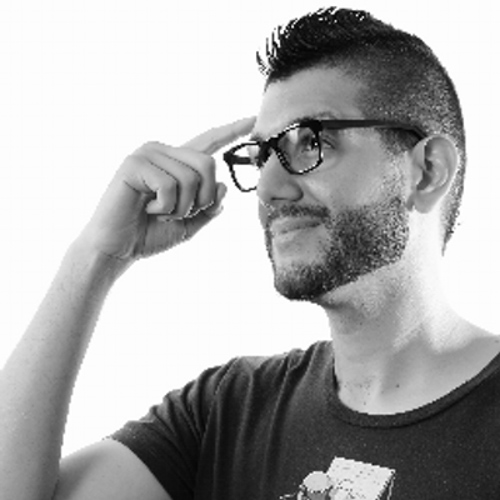
GitHub
Steven is a senior engineer at GitHub and co-host of the BeamRad.io podcast. He’s obsessed with learning and loves to share his findings with others. When he’s not coding, you can find him at a sprouting, chopping, or drilling something.
DockYard is a digital product consultancy. We specialize in production-ready apps that scale as companies grow.
Over the last decade, companies like Netflix and Apple have trusted DockYard to overcome complex product challenges. We offer a range of consulting services with capabilities in product strategy, design, user experience (UX), full-stack engineering, and QA.
We’re also dedicated to advancing open-source web development technologies, such as libraries and tooling built around the Elixir programming language. We believe product limitations should never limit success. That’s why we invest heavily in open source – to solve seemingly unsolvable problems.

SmartLogic is a custom web and mobile software development shop. Originally based in Baltimore, our team is now fully distributed across the US. We’ve been bringing new projects to life since 2005 with progressive, best-of-breed technologies and methods including Elixir/Phoenix, Ruby on Rails, ReactJS, React Native, and Flutter.
We work with funded startups to accelerate time to market; we work with established organizations to build software that improves or automates existing business processes. We create sophisticated systems by building and connecting simpler systems, so that whether it’s our team or yours maintaining and iterating on our code in the future, the software we’ve built is scalable, sustainable, and easy to reason about.
We’ve had Elixir projects in production since 2015, and our team regularly writes and presents on Elixir/Phoenix. We also run the Elixir Wizards podcast, which just wrapped up season eight on exploring the theme of Elixir in a Polyglot Environment.

Kamana is on a mission to establish an effortless (and unbelievably fast!) staffing process for healthcare professionals and employers. Built from the ground up on Elixir and Phoenix (& LiveView), the Kamana platform has already helped more than 180K professionals and employers more effectively navigate the world of healthcare staffing.
Comprised of 40+ team members and growing, we are a remote-first company that favors asynchronous communication. Our user-centric, feedback-driven approach to software development parallels our people-first, feedback-driven approach to collaboration and creation.
We celebrate authenticity and want everyone to not only feel open to be themselves, but to embrace it. We’re transparent and we’re nimble. We’re always curious and are continuously testing, failing, and learning, but we make sure to have a ton of fun along the way!
If solving real problems for real people is important for you and your work, we’d love for you to join us in building our vision to empower healthcare professionals to instantly start work wherever they are needed.
Interested in working at Kamana? Learn more: www.kamana.com
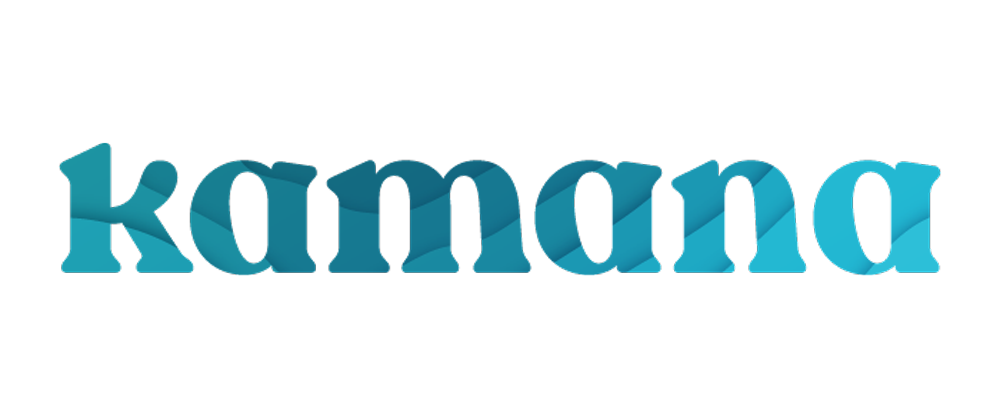
WyeWorks is a team of expert software consultants with a proven track record of near 15 years building software people love and enabling companies to succeed. Our team of passionate engineers enjoy working together in close collaboration and thrive when crafting high quality solutions using technologies we love like Elixir, Ruby on Rails and JavaScript. Clients love partnering with us, and we love helping them build the right thing right. WyeWorks is also committed to invest and help advance open-source technologies we use and communities we care for. Let’s build the next big thing together!

dscout helps companies better understand the experiences people have with their products and brands in everyday life. Our SaaS video research platform helps our customers gather, manage, share and analyze millions of in-context moments submitted by people around the world.

Simpli.fi is a leading provider of workflow software and programmatic advertising solutions, serving over 1,500 agencies, advertisers, and media buying organizations. Our solutions enable our customers to perform more effectively and efficiently, and maximize ROI on their advertising spend across CTV, mobile, display, and other media types. Our platform delivers performance on budgets of all sizes, executing over 100,000 campaigns for 25,000 advertisers in a typical month. Simpli.fi’s investors include leading private equity firms Blackstone and GTCR.

Launch Scout is your launch pad for custom software ideation and development - resulting in Software that Lands. We work with clients to launch their software products into reality by guiding them through the product journey, or by providing a capacity boost with our skill-diverse team members.
We believe in true partnerships, diving deep into our client’s domain, communicating with them daily, and delivering a solution with thoughtful UX to complement our engineering. We’ve crafted production solutions with Elixir in industries such as logistics, transportation, manufacturing, healthcare, and sports statistics. Our goal: to create a simple web app for your complex problem.
